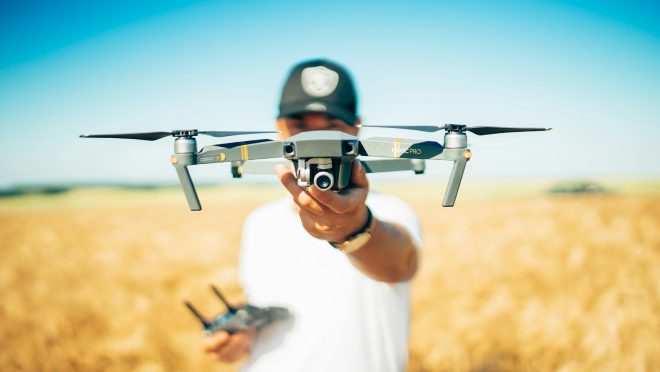Drone technology is revolutionizing the way agronomists monitor and analyze crops, particularly for research farms. Agronomists, agricultural engineers, and farmers may assist in streamlining their operations by employing powerful data analytics to acquire useful insights into their crops.
This is why the usage of drones in agriculture is rapidly increasing as part of an effective approach to sustainable agricultural management. A report by the Global Ag Tech Initiative projects that by 2025, the global market for precision agriculture techniques – which enable farmers to make more informed decisions – will grow to $43.4 billion.
Drone Tech in Agriculture
When using drones, agricultural researchers encounter a variety of difficulties. Drone flights require a large time commitment from individuals in already demanding positions every week. Furthermore, the acquisition of more detailed maps for in-depth analysis necessitates lower-altitude flight missions, which lengthens the time spent on research farms relative to commercial fields.

The large data storage requirements of repeated high-resolution flights make routine acquisition during the growing season extremely difficult. Coordinating activities with senior researchers based centrally is made more challenging by the fact that test plots are dispersed throughout the world.
To meet these issues head-on, DJI has unveiled creative ways to make drone operations for agricultural research farms more efficient. One crucial element that helps relieve the burden on researchers is the DJI Dock. Through the FlightHub 2 APIs, this technology facilitates cloud-based data storage, planned recurring flights, remote drone deployment, and seamless data transfer to senior research teams.
Monitoring Crop Health with Drone Tech to Improve Efficiency and Sustainability
Syngenta, a multinational agricultural giant based in Switzerland, launched the first DJI Dock on a research farm in Illinois, USA, in a ground-breaking project. The site offered an excellent platform for evaluating the capabilities of remote drone operations in agriculture since it had access to three sizable plots of maize and soybeans.
The deployment of DJI’s Matrice 30T on Syngenta’s research farm showcased the versatility of drone technology in agricultural research. Utilizing different sensors on the Matrice 30T, Syngenta employed various mission plans to capture essential data. The Zoom sensor facilitated the capture of leaf-level imagery to identify diseases and insect damage, while the Thermal sensor provided insights into stress factors such as heat, fertilizer levels, and water levels. The Wide sensor, on the other hand, generated basic orthomosaics.
“With the DJI Dock automatically capturing data weekly, we now have more time to focus on what’s important on the research farm. This not just saves us time, but also increases the frequency of capture, unlocking a deeper level of plant growth trends.” – Bill McDonell, Digital Solutions Lead, Syngenta.
The Syngenta team was able to obtain raw images from all across the world once the missions were planned and carried out. Syngenta processed the data from their research plot in collaboration with DroneDeploy, a third-party company that specialises in photogrammetry. Overlaying data from several sources, including drone photography, will be part of the final analysis, which is scheduled for the winter months, to provide thorough insights.
In August and September, Syngenta conducted limited testing and found that the DJI Dock concept, which collects repeatable data on its own, saved the agronomy team about 10 hours a week. This feature saved the team time so they could concentrate on important work like tissue sampling and data processing. Understanding disease pressure, taking high-detail photos, and producing simple ortho mosaic maps were all made possible by the Matrice 30T’s sensor array.
Last Line
By partnering with Syngenta, DJI is paving the way for revolutionary developments in autonomous docking technology in 2024, as the company maintains its emphasis on mapping and surveying. Research farming and DJI drone technology are a big step towards a more data-driven and sustainable agricultural future, as agricultural research continues to embrace new technologies. Drone technology will be crucial to agriculture in the future, as seen by the forecasted $43.4 billion global market for precision agricultural techniques by 2025.




